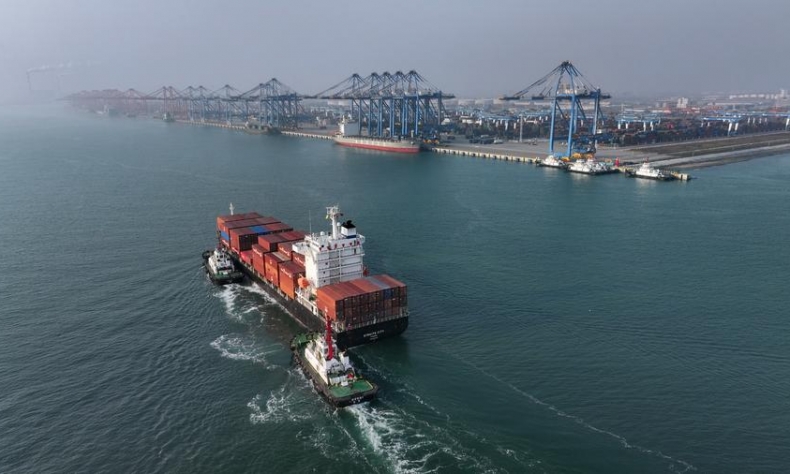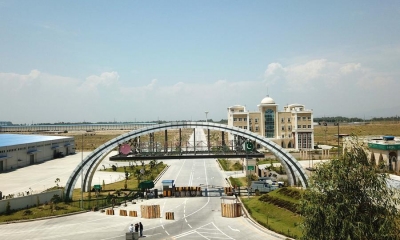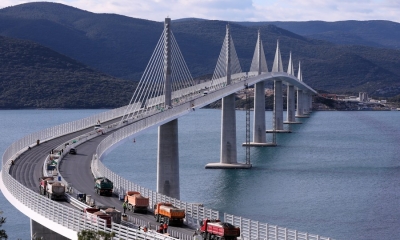Tariff Extremism: Tipping Point of New World Economic Order

America’s protectionist policies reflect a global economic reordering that is already underway.
As U.S. tariff offensive eclipses friends and foes, the contours of global economic system are shifting, with emerging markets such as China and the Global South on the rise.
Since returning to the presidency, Donald Trump has unleashed a new wave of “tariffs terrorism” unprecedented in scope. Traditional allies and strategic rivals are now under the same banner, marking a radical shift in Washington’s trade policy that hardens positions taken in Trump’s first term and now, amplifying them with an unbridled display of power.
Trump’s tariff impact on global economic system
In order to assess as to why U.S. propagates protectionism, decoupling and unilateralism is doomed to fall. And what are the merits of law-based multipolar world economic order that will steer all toward sustainable prosperity, there are vivid rationales.
One of the most immediate reasons is that protectionism is increasing consumer prices. Tariffs and import restrictions lead to higher costs for imported goods, which are often passed on to consumers. For example, the tariffs imposed by the U.S. on Chinese goods have resulted in higher prices for electronics, clothing, and household items, disproportionately affecting low- and middle-income households. This inflationary pressure can reduce consumer spending and overall economic growth.
Protectionist policies stifle economic growth by limiting competition and innovation. When domestic industries are shielded from foreign competition, there is less incentive to improve efficiency and invest in new technologies. This can lead to stagnation in productivity and a decline in the overall competitiveness of the economy Furthermore, protectionism disrupts global supply chains, leading to inefficiencies and increases costs for businesses that rely on international trade.
The rise of protectionism, a tool of “tariff terrorism”, has also strained international relations, as countries engage in retaliatory measures that can escalate into trade wars. The ongoing U.S.-imposed trade tensions on China serve as a prime example, with both countries imposing tariffs on each other’s goods, leading to uncertainty and volatility in global markets. Such tensions can hinder diplomatic relations and cooperation on other critical issues, such as climate change and security.

Protectionism, especially tariff extremism, creates inefficiencies within domestic industries by reducing competition. When companies are shielded from foreign competitors, they may become complacent and less responsive to consumer needs. This can result in lower-quality products and services, ultimately harming consumers and the economy as a whole). Additionally, industries that rely on imported inputs may face higher costs, further exacerbating inefficiencies.
Since protectionist policies become more entrenched, the risk of long-term economic fragmentation increases. Countries may become increasingly isolated from global markets, leading to a decline in international trade and investment. This fragmentation can hinder economic growth and development, particularly in emerging markets that rely on access to global supply chains. The potential for a fragmented global economy raises concerns about the future of multilateral trade agreements and international cooperation.
The cumulative effects of rising protectionism, is destined to lead to a slowdown in global economic growth. As trade barriers increase, international investment may decline, further exacerbating economic challenges in many regions.
The dollar, for decades a safe haven, fell about 1.7 percent on April 3, its highest daily drop since November 2022, after President Trump imposed tariffs on imports. Stock markets also tanked as tariffs ignited recession worries.
Left unchecked, a crisis of confidence in the dollar could also undermine its position as the world’s leading reserve currency, according to market commentaries.
The implementation of U.S. tariffs imposed on April 2 despite 90 days pause can be seen as “the start of a march towards Europe’s independence”, European Central Bank head Christine Lagarde told France Inter radio.
The U.S. administration’s not-so-secret plan is also to rebalance trade by weakening the dollar, analysts say, adding a way to do that would be to enlist foreign central banks in a coordinated effort to revalue their own currencies.
Dwelling on Trump, tariffs and the fate of the dollar, political economist Mark Blyth argues that America’s protectionist policies reflect a global economic reordering that is already underway.
The multilateral effort to mitigate the economic risk
Given untoward situation that has been laying down foundation of new world economic order, global economic powers get a good chance to realign their economic and diplomatic terms.
As the U.S. raised its tariff, Beijing is now rethinking its export strategy to prioritize other global trade partners to help soften the blow of diminishing exports to the world’s second-largest economy.
Earlier last week, Chinese President Xi Jinping pledged to deepen “all-round cooperation” with China’s neighbors and urged the European Union to join hands with Beijing in resisting “unilateral bullying” by Washington.
“The recent revival of Beijing’s economic dialogues with Japan — their first in six years — and South Korea suggests regional powers are reassessing relationships in response to American uncertainty.

Chinese President Xi also successfully completed three-nation Southeast Asia tour and consolidated trade ties with Vietnam, Malaysia and Cambodia.
Over the past two decades, China and Southeast Asia have significantly deepened their trade links. In 2024, the total trade volume between China and ASEAN nations reached approximately $982 billion, according to Chinese government data. This figure is set to grow further now that Chinese firms are effectively frozen out of the U.S. market.
Chinese manufacturers will be looking for pockets of opportunity in Southeast Asia that in the past they may not spent the time, effort and money researching because they had a lucrative American market that sucked in everything they produced,” Deborah Elms, Singapore-based head of trade policy at the Hinrich Foundation, told the media.
Although paused for 90 days, the EU faces a new 20 percent tariff on up to €380 billion ($416 billion) worth of exports to the U.S. The EU says it plans to reach out to countries in the Indo-Pacific and the Global South in a bid to counter U.S. protectionism.
During a three-day visit to Vietnam, Spain’s Prime Minister Pedro Sanchez insisted that Europe explore new markets and said his government was “firmly committed” to opening up his country and Europe to more trade with Southeast Asia.
The fallout from Donald Trump’s trade war — even with a 90-day reprieve on some tariffs — is only beginning to be felt. But one immediate knock-on effect could be to nudge the EU closer to China.
European Commission President Ursula von der Leyen called for a “negotiated resolution” with China in a call with Chinese Premier Li Qiang in couple of days. She stressed the need for Brussels and Beijing to uphold a “strong reformed trading system, free, fair and founded on a level playing field.
Earlier last week, Chinese Commerce Minister Wang Wentao spoke with Maroš Šefčovič, the Commission’s chief trade negotiator, to explore ways to deepen economic cooperation between the two sides. Meanwhile, Spanish Prime Minister Pedro Sánchez urged fellow EU leaders to review the bloc’s strained ties with China.
In a meeting with Sánchez in Beijing, Chinese President Xi Jinping said the EU and China must “jointly safeguard the trend of economic globalization and a fair international trade environment, and jointly resist unilateral and coercive practices.”
A European diplomat said that Trump’s trade offensive will make EU countries “less hawkish on China,” especially now that it’s clear Europe can’t afford to alienate a country that controls many of the raw materials it critically depends on. China is the world’s largest producer of graphite, lithium and refined copper, essential components for many green technologies, from electric vehicles to renewables.
The article reflects the author’s opinions, and not necessarily the views of China Focus.
 Facebook
Facebook
 Twitter
Twitter
 Linkedin
Linkedin
 Google +
Google +






